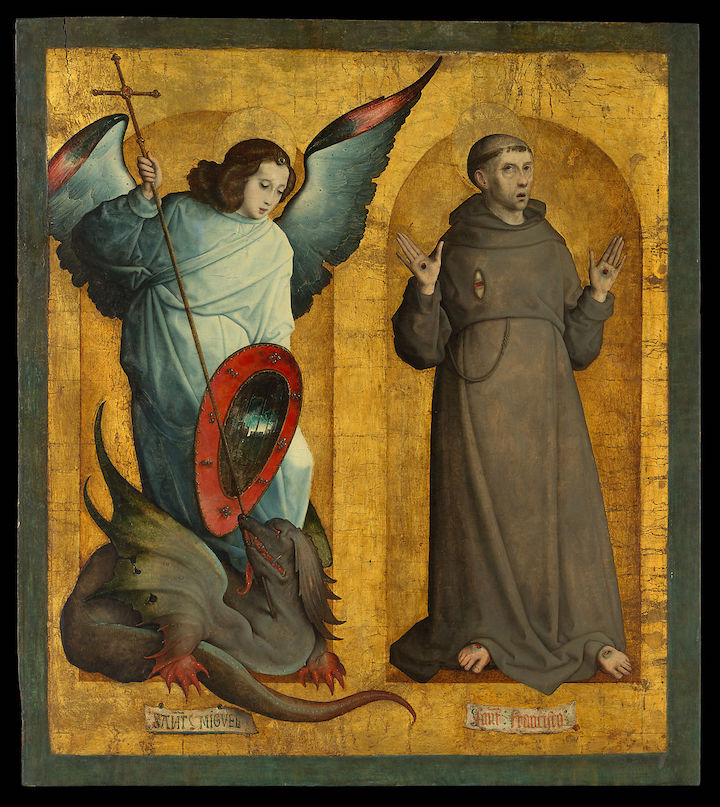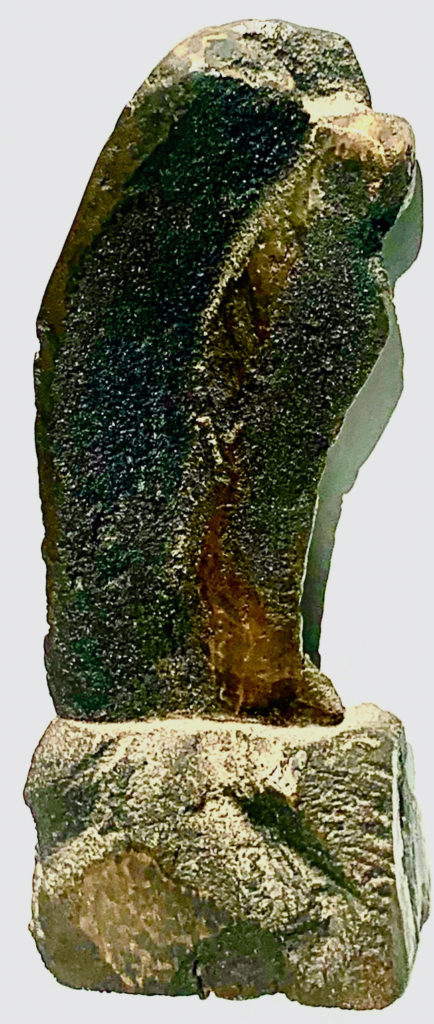Question: What holy place far from Rome was visited on pilgrimage by Sts. Thomas Aquinas, Catherine of Siena, Bernard of Clairvaux, Francis of Assisi, and many popes, including St. John Paul II? Perhaps you would be keen to join this illustrious company.
Answer: The shrine of St. Michael in Monte Sant’ Angelo, on the slopes of Mount Gargano overlooking the Adriatic, located on the “spur” of the boot which is Italy. The shrine itself is located in a cave, an ancient site of pagan worship, where according to hagiographical tradition the Archangel Michael appeared in 490. He instructed that a shrine be built to his honor and that those who invoked him would be defended in battle against pagan military incursions. Pope Gelasius I approved the shrine in 493.
I said that St. Francis of Assisi had visited the shrine, and yet only in a manner of speaking. This great saint made the journey to Monte Sant’ Angelo, but considered himself too unworthy actually to enter the cave once there. It was enough for him to make the sign of a cross with his finger on a stone outside.
You may say: I have never heard of this great place of pilgrimage. Neither had I, until recently. But perhaps like me you will pray for the means and opportunity to go there, after the pandemic scare is over?
Monte Sant’ Angelo is not unlike Mont-Saint-Michel on the other side of Europe, founded in the early 800s after St. Michael appeared there, too, and instructed the bishop to build him a shrine. These shrines together illustrate four important marks about devotion to St. Michael: antiquity, exogeneity, catholicity, and urgency.
First, antiquity. Devotion to St. Michael is something I would have once scratched my head over. It’s not something that, on Protestant principles, ought to exist, in its picture of “early Christianity.” And yet there it is, from the beginning. At least it’s manifested as soon a Christianity is manifested publicly. Around 324 the Emperor Constantine built the “Michaelion,” a church in honor of the angel, after St. Michael appeared to him and helped him win a battle. The iconography of St. Michael as a soldier slaying the serpent Satan dates from this time. But Constantine was affirming a tradition of devotion that was already centuries old.
Second, exogeneity. That’s a fancy word that economists use for causes that come “from outside” a system. It’s fact that devotion to St. Michael is construed within pious tradition not as a construct or invention of human piety, but as a response to particular interventions of the angel from without. The angel is sensed as a supernatural person who manifests himself and gives definite instructions to Christians to honor him in certain places. The famous St. Michael prayer of Leo XIII, somewhat similarly, was composed by that great pontiff after he fainted from an oppressive vision of besetting demons. (See the excellent recent book on this subject by Kevin Symonds.)

Third, catholicity. By this I mean that devotion to St. Michael has erupted throughout Christendom. But also, by God’s design, apparently, this devotion loves to “take over” pagan devotion. The cave of Monte Sant’ Angelo was a place of pagan worship. In Germany, shrines to St. Michael supplanted places that had previously been devoted to the Norse God, Odin (“Wotan”) – as if people sensed that what was found alluring in the false god was found, truly, in the goodness of that mighty angel.
St. Michael has a particular appeal to the human imagination generally. I saw this directly in my own life: a sculptor friend, not a Catholic or even a Christian, but inspired by the example of a young Catholic family in what can often seem a hostile world, made a statue for me to honor my namesake. He crafted it so that, looked at one way, it was a mighty angel with a sword, and, looked at another way, it appeared as a child shielded by the presence of his parents. (See the image at column’s end.)
My friend had thus, unbeknownst to himself, captured in a single work the two offices traditionally ascribed to St. Michael: the first, well-known, is that he fights spiritual battles; the second, hardly known at all, is that he has been regarded from the earliest centuries of the Church as a great healer and salve.
Fourth, and finally, urgency. “It is true that ‘the powers of death shall not prevail,’ as the Lord has assured (Mt 16:18), but this does not mean that we are exempt from trials and battles against the snares of the evil one.” St. John Paul II said this, when he visited Monte Sant’ Angelo, explaining how prayers to St. Michael have a certain urgency in every age.
Note that the prayer of exorcism, which Leo XIII composed as a companion to the St. Michael prayer, and recited many times each day, refers to devils that had already besieged the holiest places – that during a pontificate some look back upon now with nostalgia.
“This battle against the devil which characterizes the Archangel Michael remains relevant today, because the devil is still alive and at work in the world. In fact, the evil that is in it, the disorder we see in society, the incoherence of man, the interior fragmentation of which he is a victim, are not merely the consequences of original sin, but also the effect of the dark and infesting activity of Satan, of this saboteur of man’s moral equilibrium. St Paul does not hesitate to call him ‘the god of this world’ (2 Cor 4:4), inasmuch as he shows himself to be a cunning enchanter, who knows how to insinuate himself into our actions so as to introduce deviations which are as destructive as they are apparently conformed to our instinctive aspirations.”
Thus, again, words of St. John Paul II. I know no better description of the urgency of spiritual combat today, for which St. Michael is the catholic remedy.
Sancte Michaël Archangele, defende nos in proelio.

*Image: Saints Michael and Francis by Juan de Flandes, c. 1505–9 [The MET, New York]
You may also enjoy:
Joel Miller’s Angels: Messengers of Prayer
David Warren’s Sight Unseen














